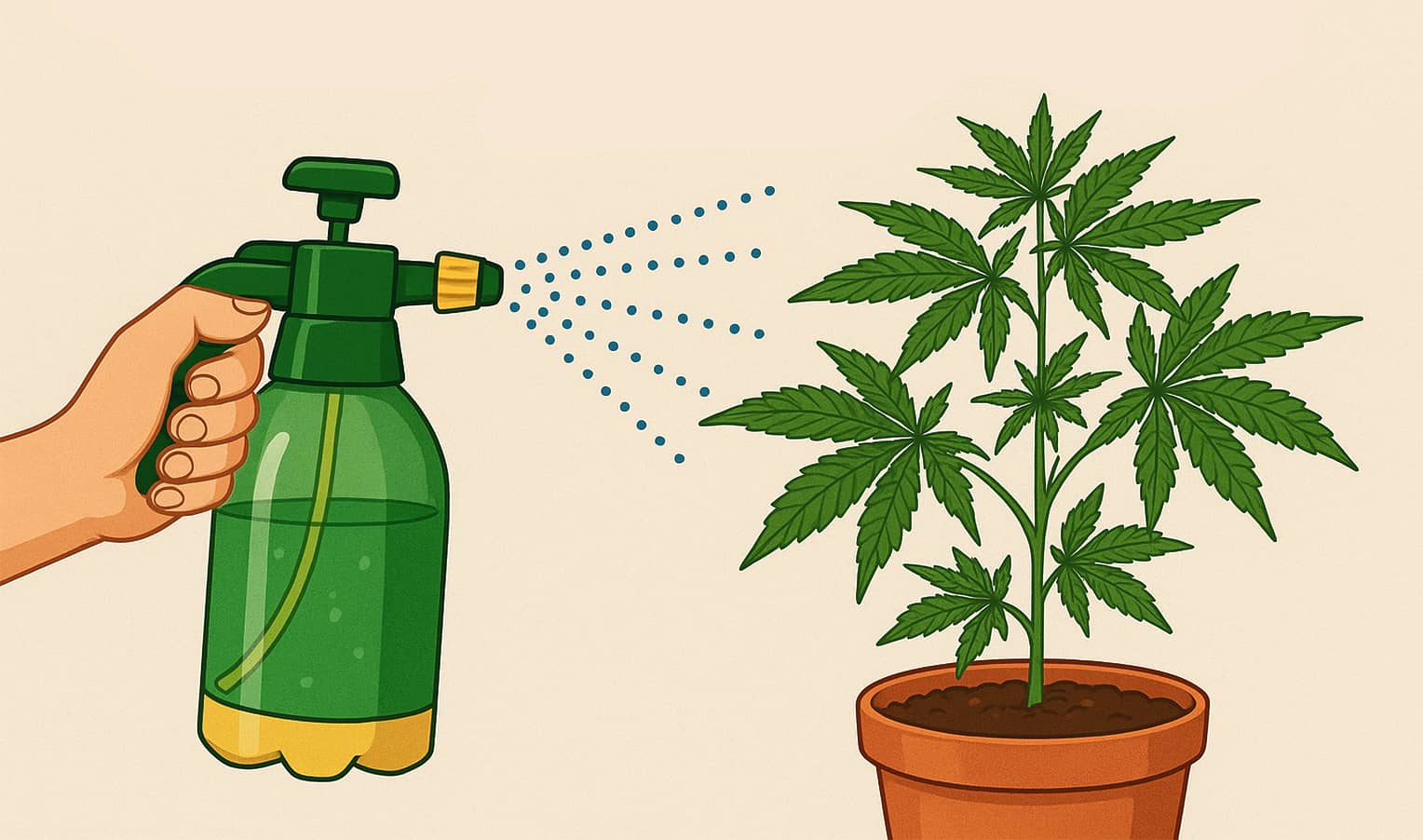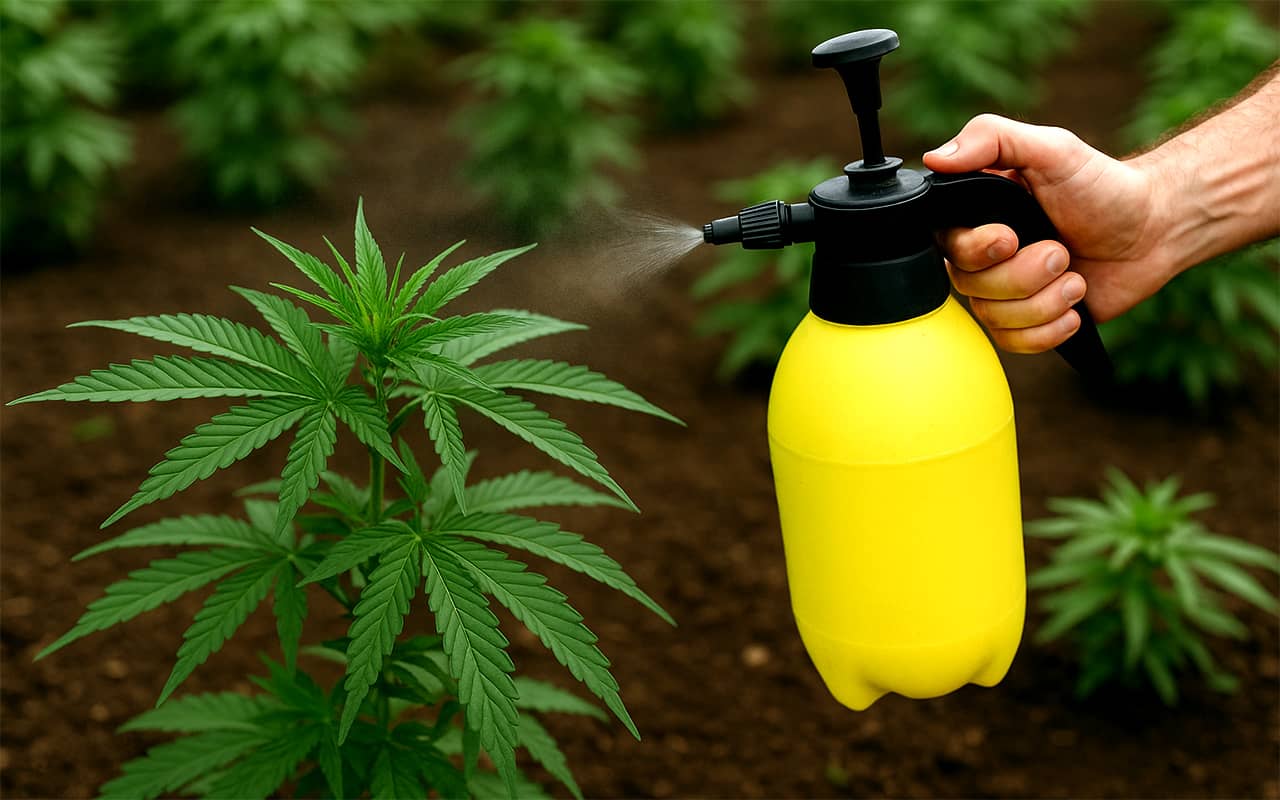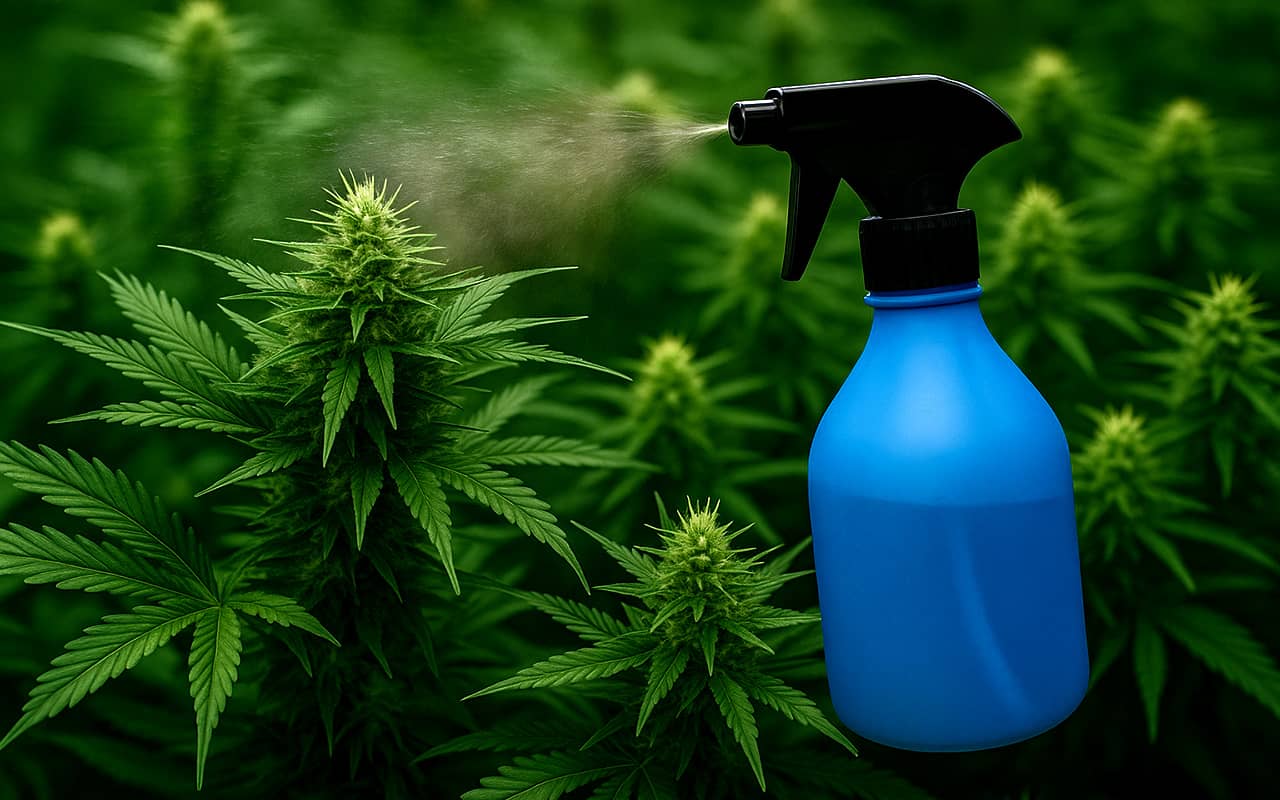0.00€
CheckoutCannabis cultivation and foliar spraying: why and how to do It right

If you grow cannabis, sooner or later you'll encounter the need for foliar spraying. This is an important stage of plant care that helps protect crops from diseases and pests, while boosting their vitality and yield. In this article, we’ll explain why and how to use foliar spraying correctly in your garden.
Why foliar spraying is important in cannabis cultivation

Foliar spraying involves applying fertilizers, fungicides, or insecticides directly to the leaves and stems. This method helps quickly replenish nutrient deficiencies, protect plants from disease, and stimulate growth.
- Rapid nutrition: Cannabis absorbs micro- and macronutrients — calcium, magnesium, sulfur, zinc, iron, boron, etc. — quickly through the stomata in its leaves.
- Protection from pests and fungi: Foliar applications help control insects and diseases while minimizing harm to the plant.
- Strengthening and growth stimulation: Special biostimulants improve plant immunity, which is especially important for healthy and resilient growth.
Main rules for foliar spraying cannabis
To ensure the procedure is effective and safe for your plants, follow these guidelines:
1. Spraying time.
- Indoor growing: Spray at the start or end of the dark period, before lights fully heat up.
- Outdoor growing: Early morning or late evening is best. Avoid spraying in direct sunlight or heat.
2. Temperature range.
Ideal spraying temperature is between 20–24°C. At higher temperatures, stomata close and nutrient absorption is poor. Spraying in cold weather can encourage fungal growth.
3. Weather conditions.
- Do not spray in rain — the solution will wash away or dilute.
- Avoid wind or strong ventilation — the mist will drift away, reducing effectiveness.
- If there’s a light breeze, stand upwind to ensure even coverage.
4. Spraying technique.
- Cover all plant parts, especially the underside of leaves where stomata are located.
- Do not make the solution too concentrated — use half the recommended fertilizer dosage.
- Test the product on one leaf first to prevent burns or damage.
5. Restrictions during flowering.
During flowering, avoid spraying buds to prevent mold and rot. In rainy climates, use organic fungicides and strictly follow safety intervals.
6. Additives.
For better liquid distribution, add a small amount of soap, yucca extract, or garden detergent (without fragrances or antiseptics) to the solution. This lowers surface tension and improves absorption.
7. Sprayer choice.
- For a few plants, a simple 750 ml hand sprayer is fine.
- For larger grows, use a pump-action sprayer with a long nozzle.
Practical use of foliar spraying: feeding cannabis through leaves

Foliar feeding is especially useful for quickly correcting nutrient deficiencies. Studies show that nutrient uptake through leaves can reach up to 95% efficiency — far higher than soil application.
Pest and disease control
- Neem oil — a popular organic insecticide and fungicide used in integrated pest management (IPM).
- Potassium soap — effective against soft-bodied pests like aphids.
- Biological products based on Bacillus thuringiensis — used against caterpillars and other pests.
Growth stimulators and microbial products
- Biostimulants like Acti-Vera, Cannabogen Delta 8, Vita Race strengthen immunity and accelerate growth.
- Products containing beneficial microbes (Bactrex, Mycotrex) improve cannabis resistance to pathogens.
Conclusion
Proper foliar spraying is an important element of successful cannabis seeds cultivation. It helps solve nutrient problems quickly, protect plants, and stimulate their development. Follow recommendations, use quality products, and stay safe — and you’ll ensure healthy growth and a bountiful harvest.
